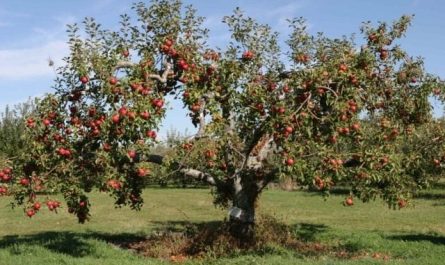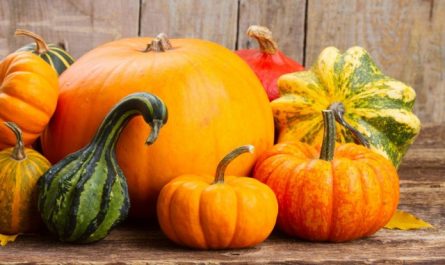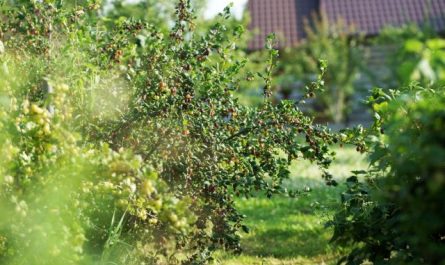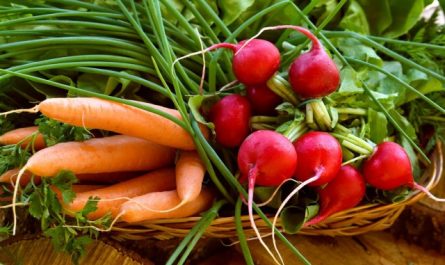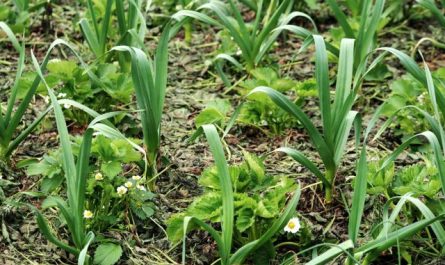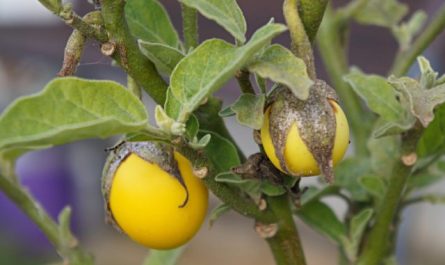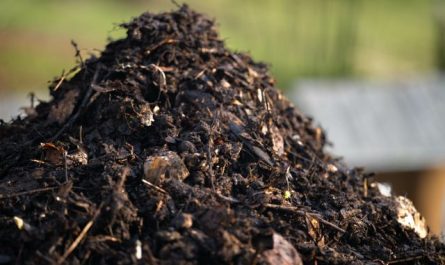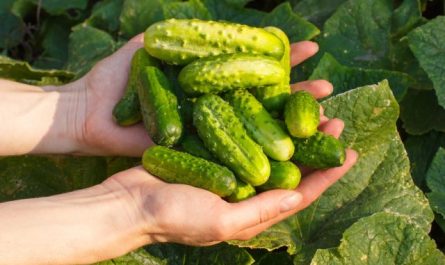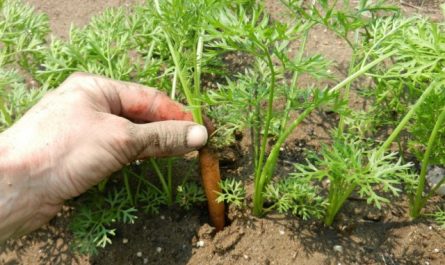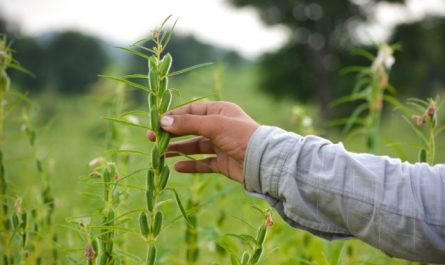When planting leek seedlings in a garden bed, every gardener wants to get not only a long and white, but also a thick stem at the end of the season. Unfortunately, this is not always possible, which often serves as a reason for refusing to plant this crop. But you should not rush to conclusions about the “capriciousness” of this type of onion. Is it possible to make the stem grow in thickness? What determines the increase in leek diameter? Let’s consider the factors that need to be paid the closest attention.

Late sowing
If the sowing period is delayed, the leek simply will not have time to grow to the required thickness. Each seed package indicates the growth period of the crop, from sowing to full maturity. This can be 120-150 days (early varieties), 150-180 (mid-season) or 180-210 days (late varieties).
To this period, you should add another week for seed germination, and if you use seedling picking, then another two weeks. Due to the stress received, the picked seedlings lag behind in development by 10-14 days. Thus, it turns out that sowing should be done approximately in January-February or, at worst, in March, depending on the region and ripening time.
Quality of seedlings
The stronger the seedlings, the better the leek will develop in the future. The strongest seedlings should be selected for planting in the ground. Weak, thin stems should be thrown away without regret – a good harvest and thick stems will not be seen from them. The following techniques will help ensure the quality of seedlings:
- illumination – in the first one or two weeks, it is advisable to provide the sprouts with additional lighting for about 20 hours a day;
- maintaining the temperature regime – heat will only be required for germination, and in the future it is necessary to provide the seedlings with coolness;
- top dressing – a couple of times, when the seedlings reach approximately 3-4 weeks of age;
- timely watering – do not allow over-watering and stagnation of water, as leek roots are prone to rotting;
- pruning – three times during the period of growth in the nursery.
Seeds should be taken fresh from a trusted manufacturer. Expired seeds, even if they sprout, will not be able to give a good harvest.

Soil composition
Leek is very voracious and loves fertile soil. Humus, rotted manure, leaves, turf soil, and compost are added to the trench in advance (preferably in the fall). The ideal option for getting a thick “leg” is to fill the trench with compost alone. The soil should be loose and rich in organic matter.
Don’t forget about acidity – this onion prefers a neutral pH. If the soil is acidic or alkaline, you should take appropriate measures.
Plant spacing and weeding
For the leek stem to be thick, there should be at least 25 cm between the seedlings, and for late varieties – at least 35. And this is not only for the possibility of hilling (by the way, hilling itself gives whiteness and length of the “leg”, but not growth in diameter). The crop does not like tightness, dense plantings will not allow the “leg” to grow in thickness – the plant will simply have little space.
The same applies to weeds, which not only take away nutrients, but also soil. Weeding is especially important at an early stage – a weak root system is not yet able to resist the aggressive development of unwanted “neighbors”. As the onion grows, it will get stronger and will begin to suppress weeds on its own.
Sun, air and water
Fleshy thick stems are obtained if the leek grows in a well-lit place. The more sun it receives, the more intensive the photosynthesis processes are, which means that the false bulb actively grows.
The soil should be kept moist, otherwise the stem will be dry and thin. But over-watering and stagnant water should also not be allowed – this can cause the roots to rot. If the soil is heavy and does not allow water to pass through well, drainage should be placed at the bottom of the trench. This way the roots will get enough air.
Feather trimming
Gardeners have different opinions about cutting off part of the green mass. Some consider this procedure necessary and important for thickness, others – a waste of time. However, this method is used not only for leeks, but also for other crops. For example, we trim raspberry seedlings to direct all forces to the development of underground organs.
The same thing happens with onions – by removing a third of the volume of leaves, we stimulate the growth of the lower part of the plant. Photosynthesis continues, the formed substances accumulate in the “leg”. Therefore, trimming once every 2-3 weeks during the season promotes thickening of the stem. Those who doubt the effectiveness of the method can conduct an experiment: trim only a few plants, and compare the results in the fall.

Timely feeding
It is advisable to feed leeks 2-3 times a month, alternating mineral fertilizers and organic matter. Ready-made complexes and “handy” compositions are suitable for this, for example, herbal infusions, chicken manure, ash. Phosphorus and potassium are added during the planting of seedlings, but if this procedure was not carried out, you can water with an aqueous solution during the summer (strictly following the instructions).
You can’t overdo it with nitrogen fertilizers – their excess leads to the accumulation of nitrates in the leek stem and reduces its shelf life. Onions “overfed” with nitrogen, although thick, quickly rot. If a large amount of organic components were added to the trench, nitrogen fertilizers can be omitted.
Harvest time
Sometimes a thick leek stem does not work out due to premature harvesting. In autumn, there is little light and heat, the growth of green mass slows down, and nutrients are actively stored in the underground part of the plant. It is during this period that the main growth of the “leg” in thickness occurs. Leeks are not afraid of light frosts, so there is no need to rush with harvesting.
However, there is a “but” here too. Over-ripened onions partially lose their taste and nutritional value. To prevent this from happening, you need to adhere to the growing period indicated on the seed package.
And the last point that determines the thickness of the leek stem is the variety. Early crops, as a rule, have a more elongated, but thin and loose “leg”. No matter how hard you try, you will not be able to increase the diameter. The thickest and fleshiest stem grows in late and some mid-season leek varieties, which is why it is stored for a long time. It probably makes sense to plant crops of different ripening periods, so that there is an opportunity to put them in storage and use them for preparations or for food in the summer.






